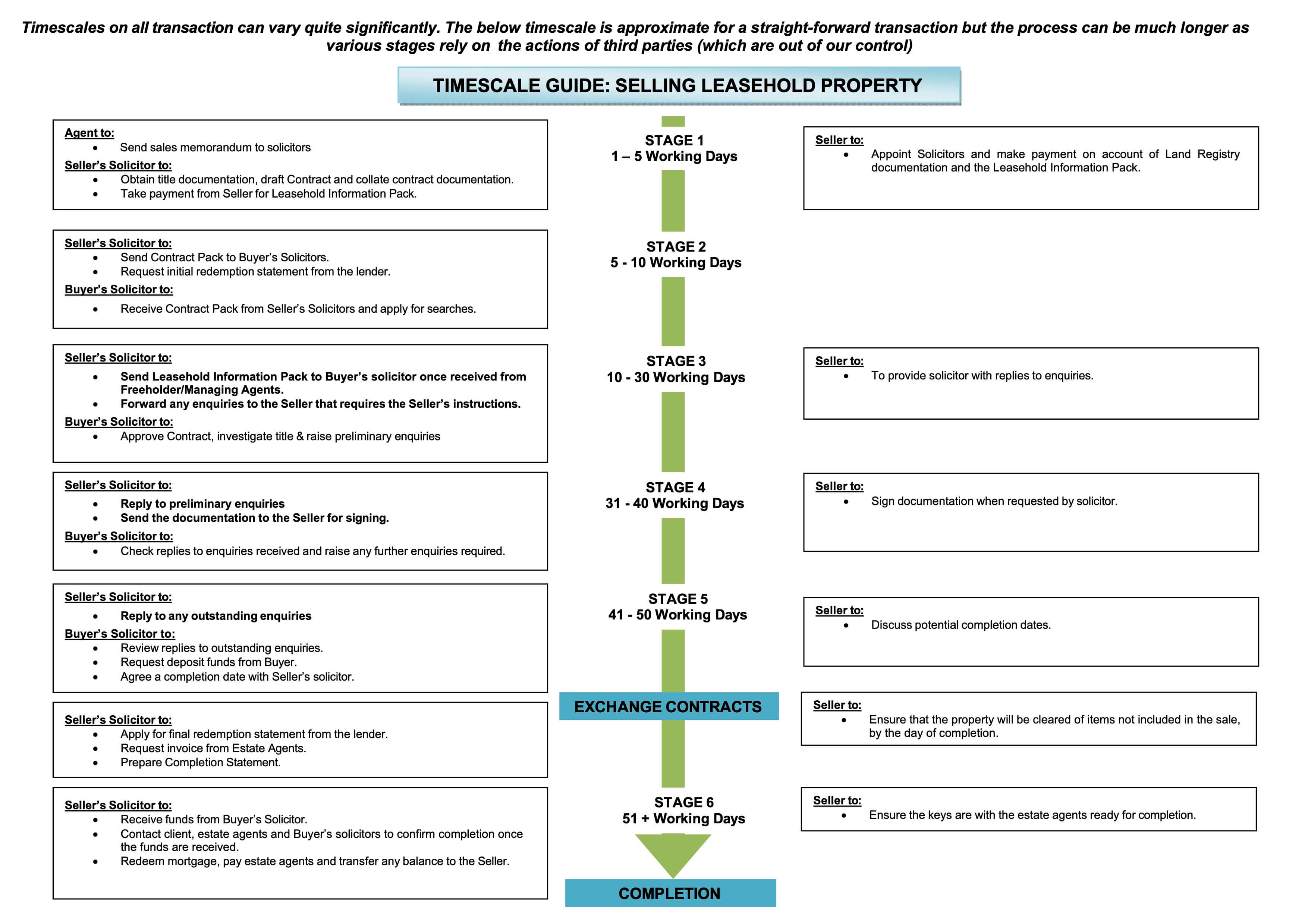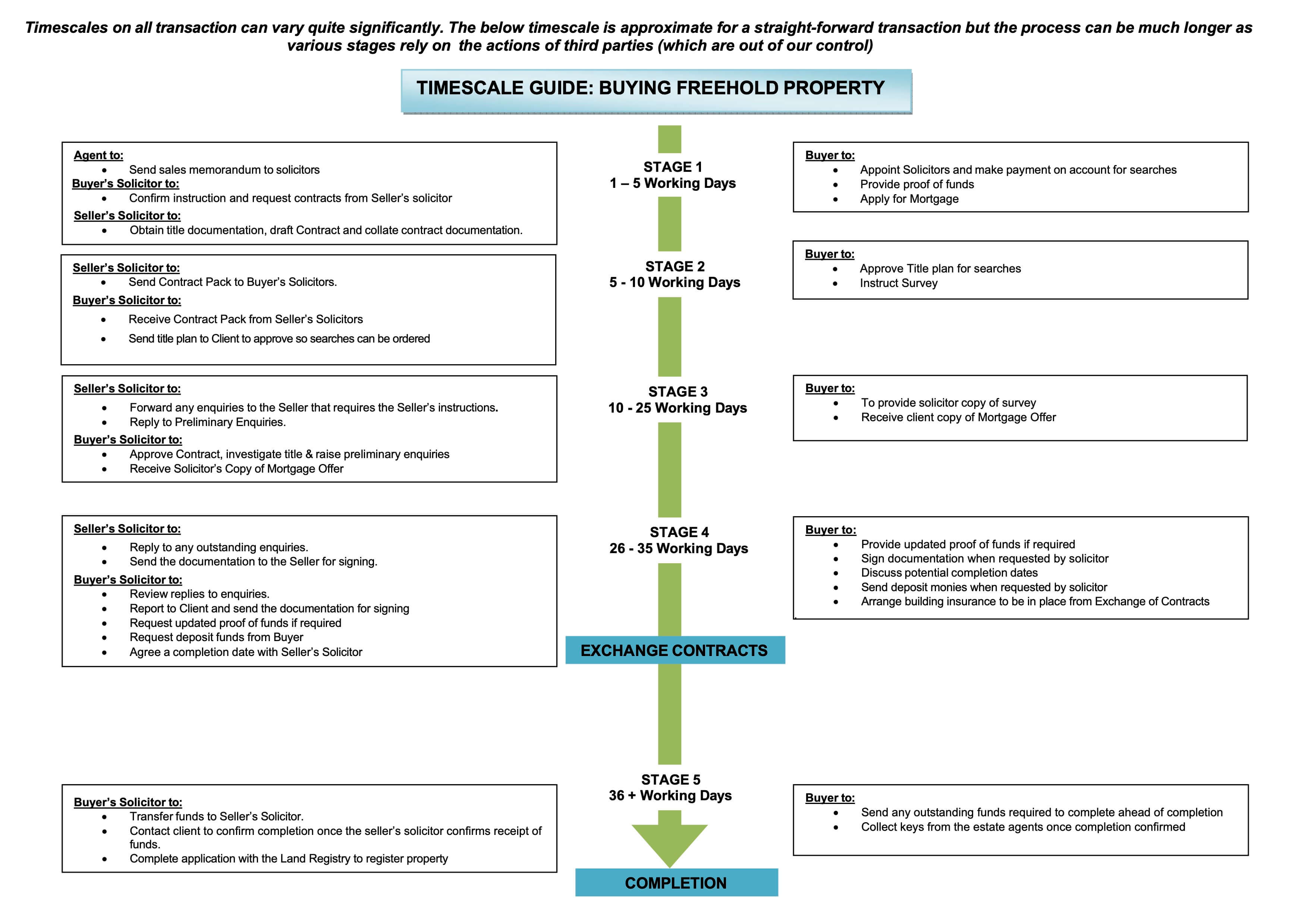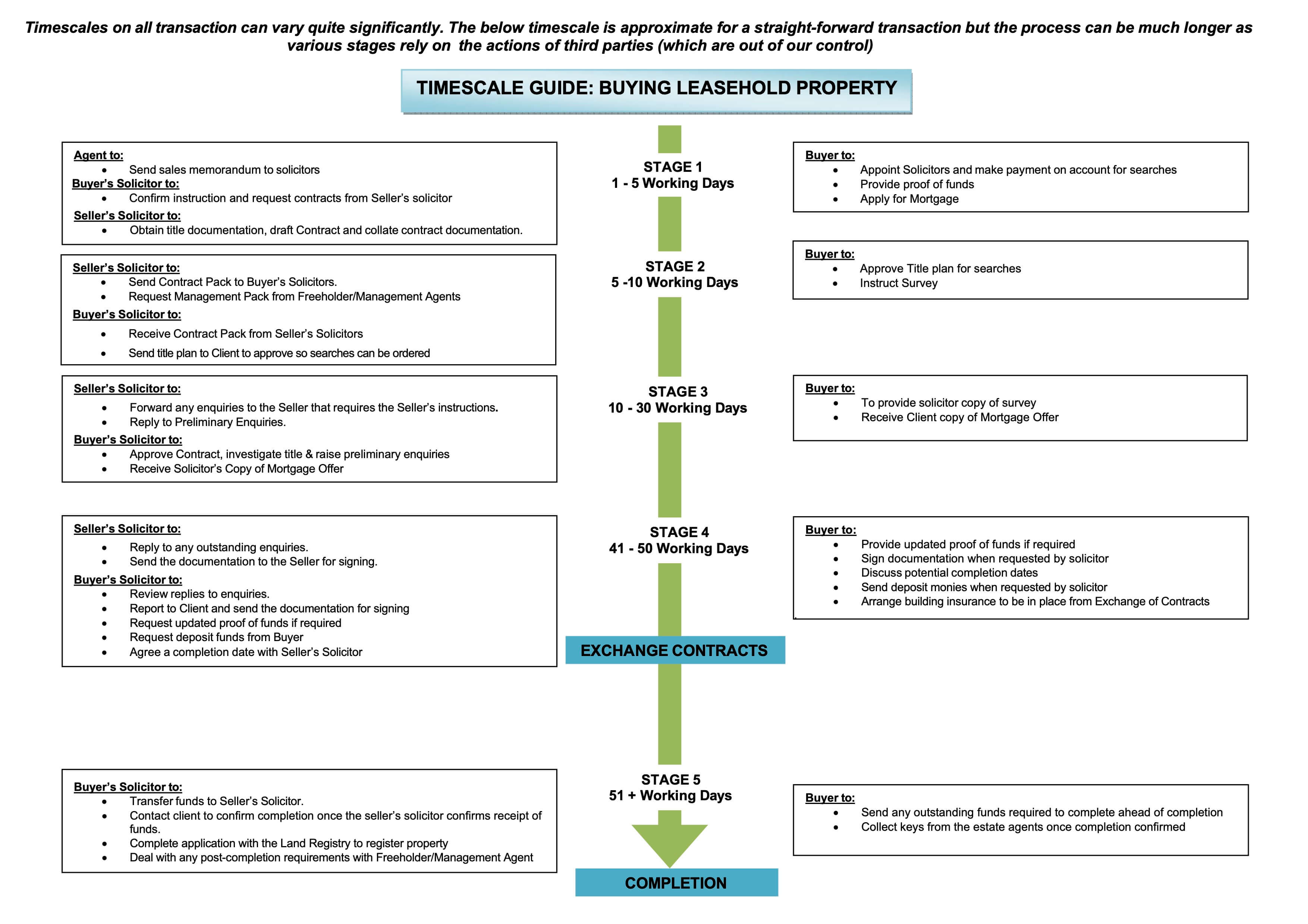If you are looking to buy, sell, transfer or remortgage a property, you may be looking for more information about the conveyancing process.
In this blog, we will look at the UK conveyancing process for both freehold and leasehold properties, to give you some more insight.
Stages of the sale of a property
There are several conveyancing stages involved in the timeline for selling a house. The following is a detailed outline of each stage:
Stage 1: During the first stage of selling a freehold or leasehold property, the seller will begin the process by appointing solicitors and making a payment for Land Registry documentation.
If the property is leasehold, the seller will also need to pay their solicitor for the leasehold information pack, which contains information about the freehold management, ground rent and service charges.
The property agent will then send the sales memorandum to the seller’s solicitors, confirming the essential details of the property transaction.
The seller’s solicitors will begin obtaining the title documentation for the property, drafting a contract and collecting any necessary documents for the contract.
Stage 2: During the second stage, the seller’s solicitor will send a contract pack to the buyer’s solicitors. The contract pack enables the buyer's solicitor to raise enquiries on the property and will include the draft contract and any other additional information relevant to the sale.
The seller’s solicitor will also request an initial redemption statement from the lender. The redemption statement will typically contain the buyer’s current mortgage balance, outstanding interest, daily rate of interest, and any redemption or closure fees.
Stage 3: At the third stage of the process, the buyer’s solicitor will approve the contract, investigate the title documentation, and raise any preliminary enquiries.
The seller’s solicitor will forward any enquiries to the seller, that require the seller’s instructions. They will also reply to any preliminary enquiries from the buyer’s solicitor.
If you are selling a leasehold property, the seller’s solicitor will send the leasehold information pack to the buyer’s solicitor once received from the freeholder/managing agents.
In both cases, the seller will then be required to provide replies to the enquiries.
Stage 4: At the fourth stage of selling a property, the seller’s solicitor will reply to any outstanding enquiries and send the documentation to the seller for signing. The seller will sign the documentation when requested by the solicitor and discuss potential completion dates. The buyer’s solicitor will review the replies to their enquiries, request the deposit funds from the buyer and agree a completion date with the seller’s solicitor.
Stage 5: During stage five both parties will exchange contracts.
The seller’s solicitor will apply for the final redemption statement from the lender, request an invoice from the estate agents and prepare a completion statement. The completion statement will break down the total cost you need to pay for various aspects of the sale.
The seller will need to ensure that the property will be cleared of items not included in the sale, by the day of completion.
Stage 6: At stage six of selling a property, the seller’s solicitor will receive the funds from the property sale. They will contact their client, estate agents and the buyer’s solicitors to confirm completion once the funds are received.
The seller’s solicitor will then redeem the mortgage, pay the estate agents and transfer any balance to the seller. Redeeming the mortgage is the process of paying off the outstanding balance on your mortgage and any other fees associated with it.
The seller will need to ensure that the keys are with the estate agents ready for completion.
Both parties will then reach the completion stage of the sale.


Stages of the purchase of a property
There are several stages involved in the timeline for buying a house. The following is a detailed outline of each stage:
Stage 1: During the first stage of buying a freehold or leasehold property, the buyer will begin the process by appointing solicitors and making payment on account of property searches. The buyer will need to provide proof of funds and apply for a mortgage.
The property agent will then send the sale memorandum to the solicitors. The buyer’s solicitor will confirm instruction and request contracts from the seller’s solicitor.
The seller’s solicitor will obtain the title documentation, draft a contract, and put together the contract documentation.
Stage 2: At the second stage of the process, the seller’s solicitor will send the contract pack to the buyer’s solicitors. In the case of a leasehold purchase, they will also request a management pack from the freeholder/management agents. The management pack sets out what ongoing expenses you might be liable to pay to the management company.
The buyer’s solicitor will send the title plan (a map that shows the registered piece of land) to their client to approve so that searches can be ordered.
The buyer will then approve the title plan for the searches and instruct a survey of the property.
Stage 3: At the third stage the buyer’s solicitor will approve the contract, investigate the title and raise preliminary enquiries. They will also receive the solicitor’s copy of the mortgage offer. The mortgage offer is confirmation that the application for a mortgage has been checked and approved.
The buyer will need to provide the solicitor with a copy of the property survey.
The seller’s solicitor will forward any enquiries to the seller that require the seller’s instructions and reply to preliminary enquiries.
Stage 4: During stage four the seller’s solicitor will reply to any outstanding enquiries and send the documentation to the seller for signing.
The buyer’s solicitor will:
- Review replies to enquiries.
- Report to the client and send the documentation for signing.
- Request updated proof of funds if required.
- Request deposit funds from the buyer.
- Agree a completion date with the seller’s solicitor.
The buyer will:
- Provide updated proof of funds if required.
- Sign documentation when requested by their solicitor.
- Discuss potential completion dates.
- Send deposit monies when requested by their solicitor.
- Arrange building insurance to be in place from the Exchange of Contracts.
Stage 5: At stage five both parties will exchange contracts and set an agreed completion date.
On the day of completion, the buyer’s solicitor will transfer funds to the seller’s solicitor and contact their client to confirm completion once the seller’s solicitor confirms receipt of funds. Following completion, the buyer’s solicitor will complete the application with the Land Registry to register the property.
The buyer will be required to send any outstanding funds ahead of completion and collect the keys from the estate agents once completion is confirmed.
Both parties will then complete the purchase.


Timeline for buying and selling a property
Buying or selling a freehold property can take upwards of 5 weeks to complete. Buying or selling a leasehold can take longer, at over 7 weeks.
It is important to note that timescales on all transactions can vary quite significantly. The timescales we have provided are approximate for a straight-forward transaction but the process can be much longer as various stages rely on the actions of third parties (which are out of our control).
Get in touch with our conveyancing solicitors
If you are buying or selling a property and you would like to speak to one of our expert conveyancers, we will be happy to hear from you.
lease give us a call or fill out our online quote form and we will contact you shortly.




Comments